Valentino Garavani is well-known among fashion enthusiasts. The designer has effectively merged Parisian and Italian haute couture, employing French embroidery alongside Italian fabrics and craftsmanship. He has established himself as one of the most brilliant designers, with a lovely and feminine style. In addition, Valentino dressed several of the world’s most beautiful and famous ladies.
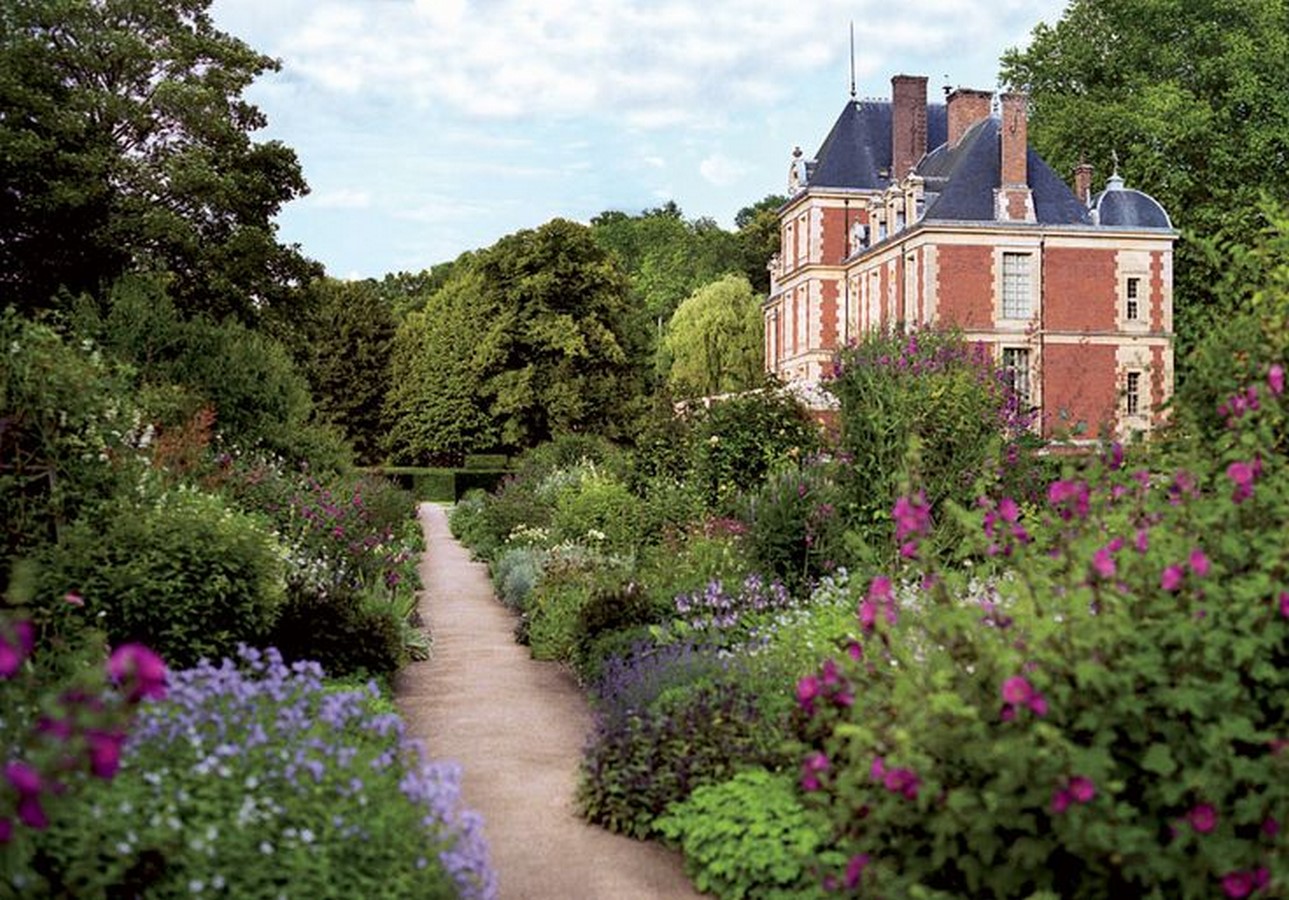
- Valentino’s Paris Chateau is the most popular and most wanted home on his real-estate portfolio
Valentino and his collaborator Giancarlo Giammetti are well-known for decorating their homes all around the world, which have all been prominently featured in fashion and decor magazines such as Vogue Living, Architectural Digest, and others. The Chateau de Wideville, a castle in the communes of Crespieres – Davron near Paris, France, is one of their most desired properties, largely due to its location, architectural style, and historical roots.
Valentino purchased the eight-bedroom château in 1995 and commissioned famed interior decorator Henri Samuel to make it comfortable yet magnificent.
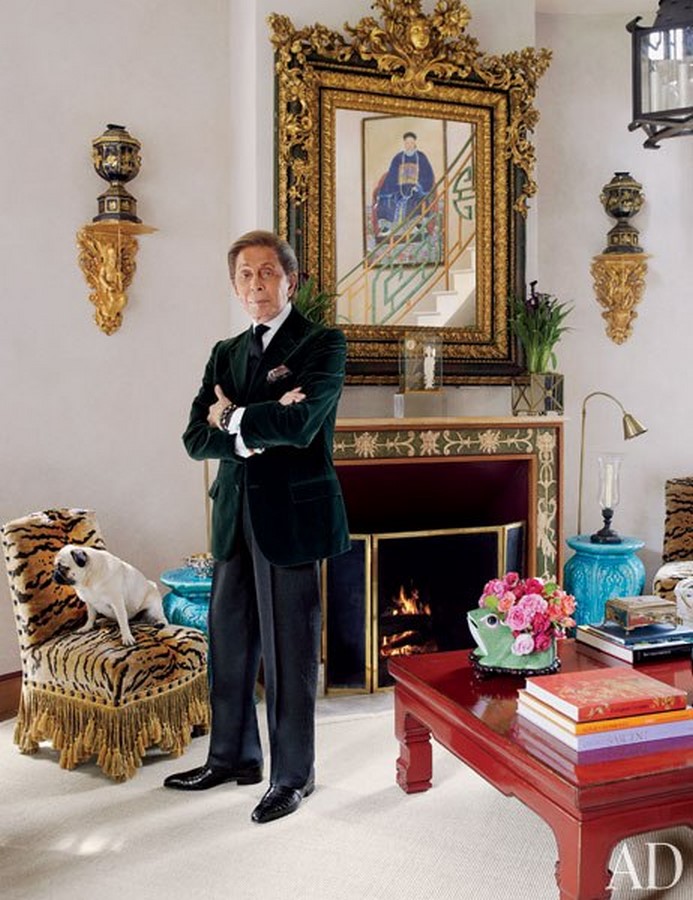
- The Chateau has historical roots
The Wideville estate belonged to the Le Picart family in the 16th century. It is then the property of Jean Bertrand , Keeper of the Seals of Henri II then Archbishop of Sens and Cardinal, then of Pierre Picquet, Treasurer of the Queen of Navarre (1562-1579). Château of Wideville, a 17th-century chateau outside of Paris, was erected by Louis XIII’s finance minister and eventually housed one of Louis XIV’s mistresses. It belongs to renowned fashion designer Valentino Garavani, who has owned the eight-bedroom château since 1995.
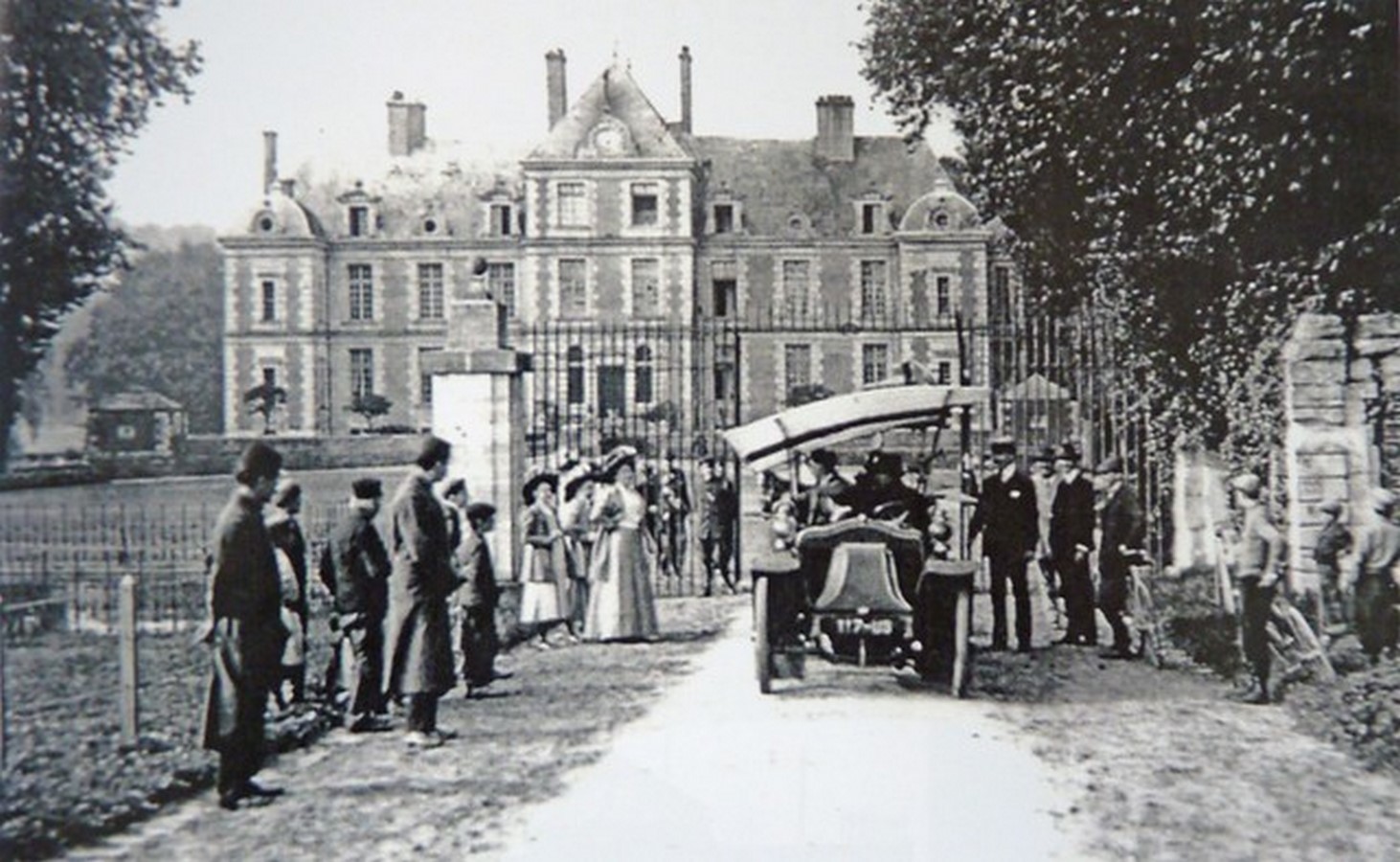
- The Chateau’s architectural style is based on a formula
Isolated on a platform surrounded by ditches confined by small brick bastions which made the wings in return and the traditional enclosing wall unnecessary, Wideville is made up of a single main building with a high central pavilion and two small side pavilions at the ends of the two lower longitudinal bodies, a formula inherited from Jacques Androuet du Cercea.
The plan of the building is similar to those of Du Cerceau, in the symmetrical arrangement of the apartments (two on each floor on either side of the vestibules and rooms of the central pavilion.
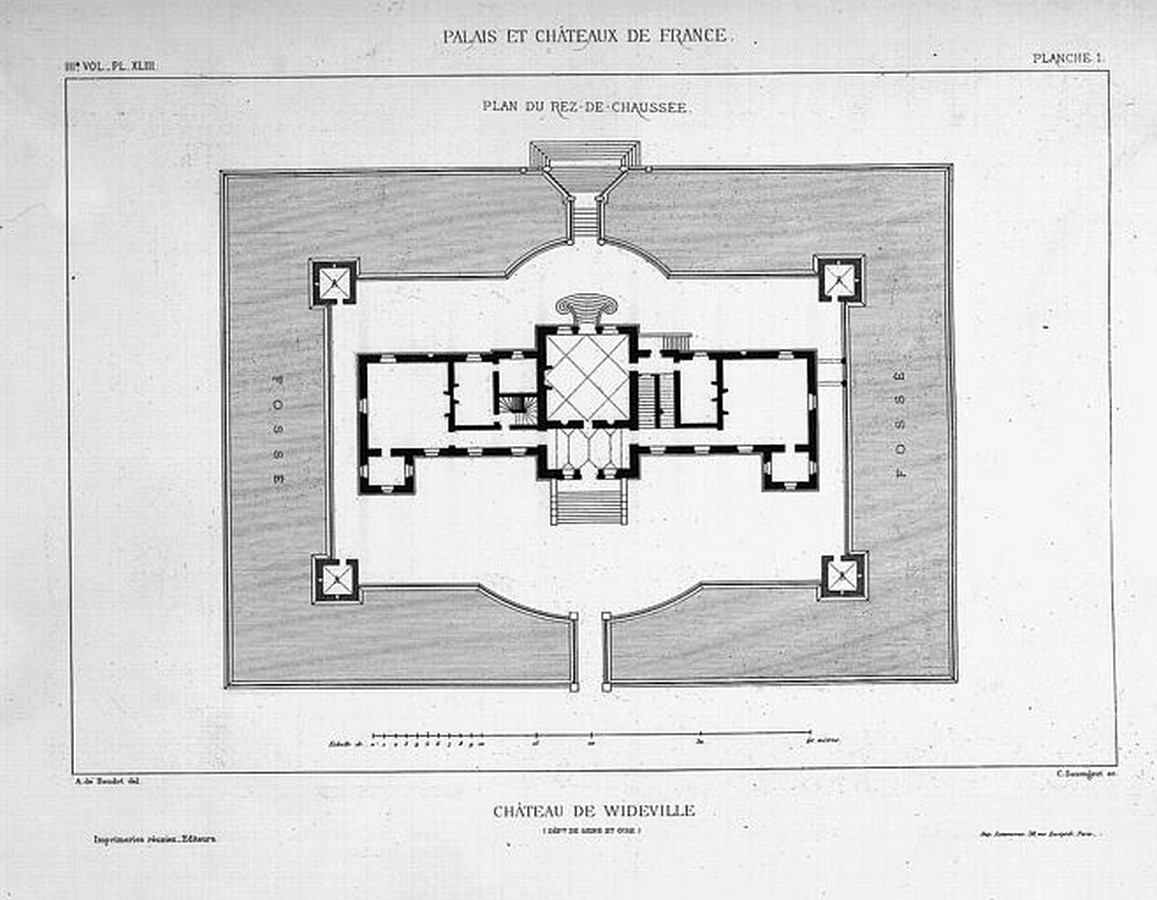
This is an elevation of great simplicity. The facades are made up of a brick facing and the harped window frames are made of white Crespières stone. The only ornament resides in the rear facade with two bays of niches for the paintings left bare between the bays. They had been adorned in 1630 with statues of the four elements by Jacques Sarrazin.
- Valentino is a big connoisseur of Asian collectables and has been highly inspired by China all through his life
Château de Wideville celebrates Valentino’s passion for all things Chinese. When Valentino began collecting Asian objects he was not a big connoisseur and his first important acquisition, in 1964, was a Mint Horse. China has been the biggest influence on his work and life. China, enthralls him, especially its reverence for history and the beauty of its traditional craftsmanship. “When I was in Beijing for the first time, in 1993,” Valentino remembers, “I saw a collection of old Chinese costumes, and it was one of the great emotional moments of my life.”
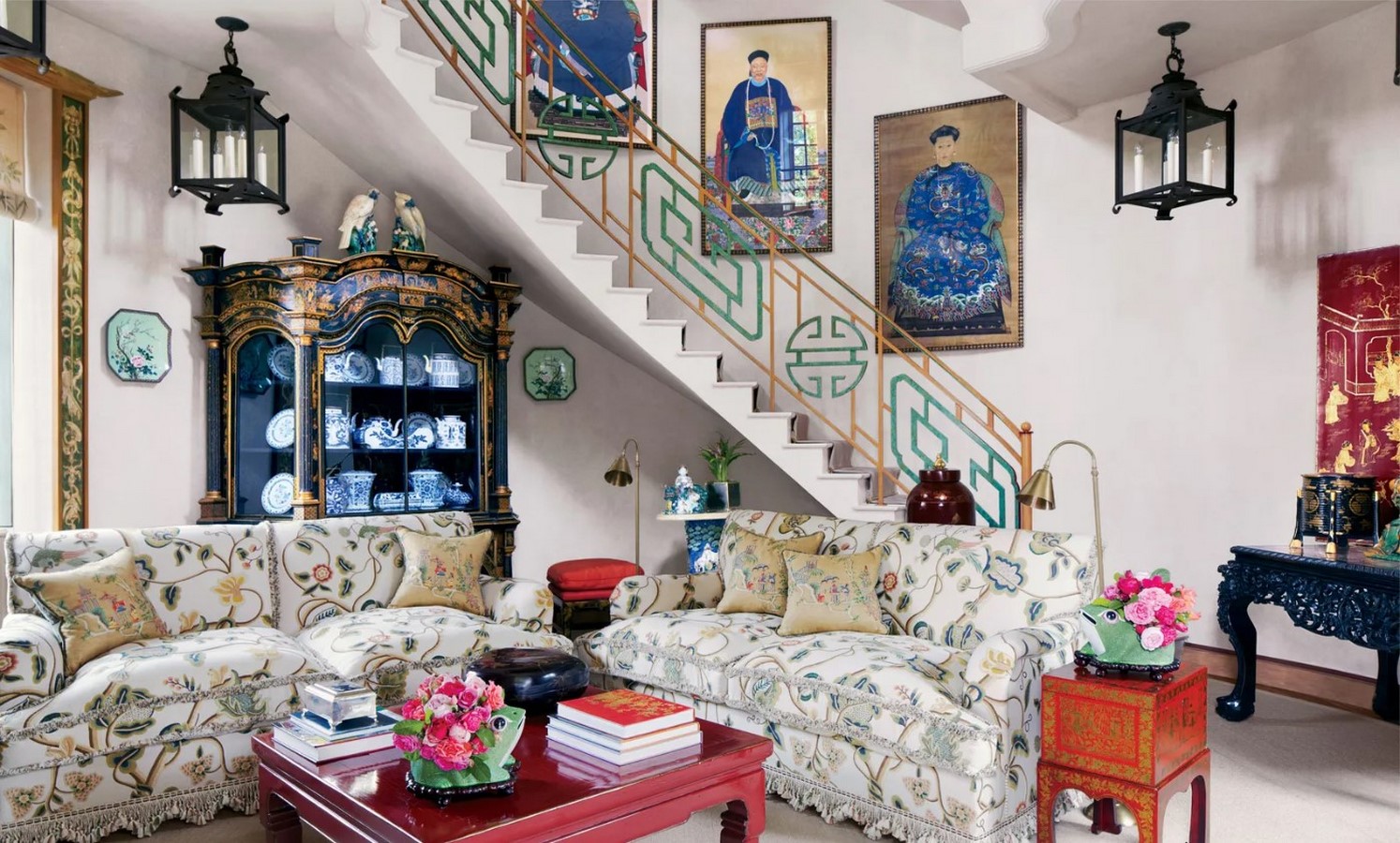
The ground-floor sofas are covered in custom-embroidered cloth and dotted with vintage silk pillows; the china cabinet is Italian chinoiserie, and frog-shaped jardinieres display roses from Wideville’s gardens.
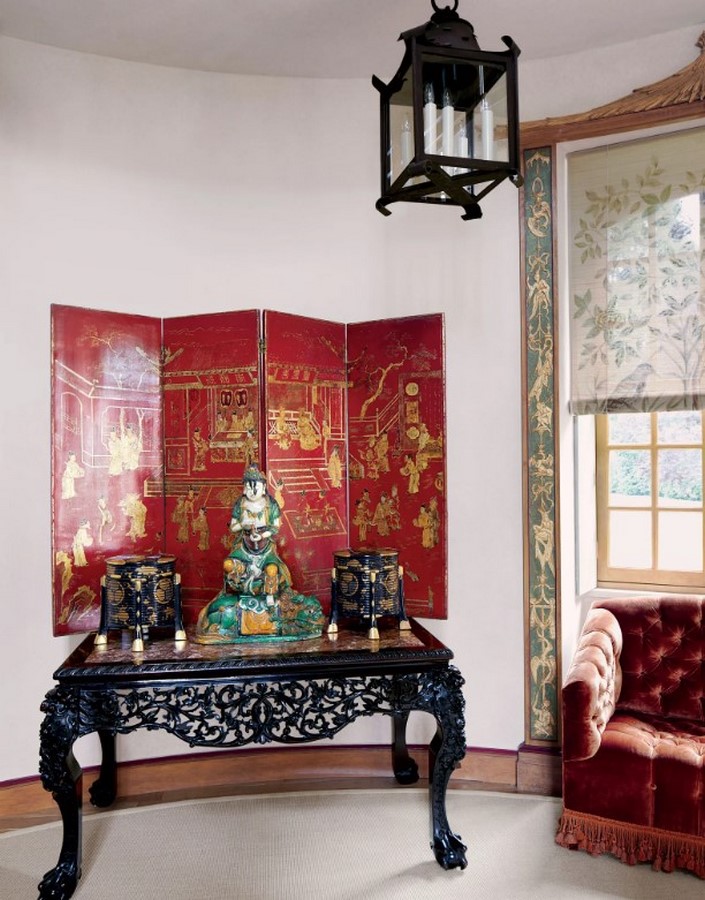
- Winter Garden is Valentino’s favourite spot on the estate
The château’s winter garden, a multipurpose chamber designed primarily in the chinoiserie style, is Valentino’s favourite place on the estate. Among the ornamental components are Famille-rose garden seats, sturdy covered jars perched on gilt-wood consoles, and a battalion of figurines clothed in Chinese costumes and displayed on golden wall brackets.
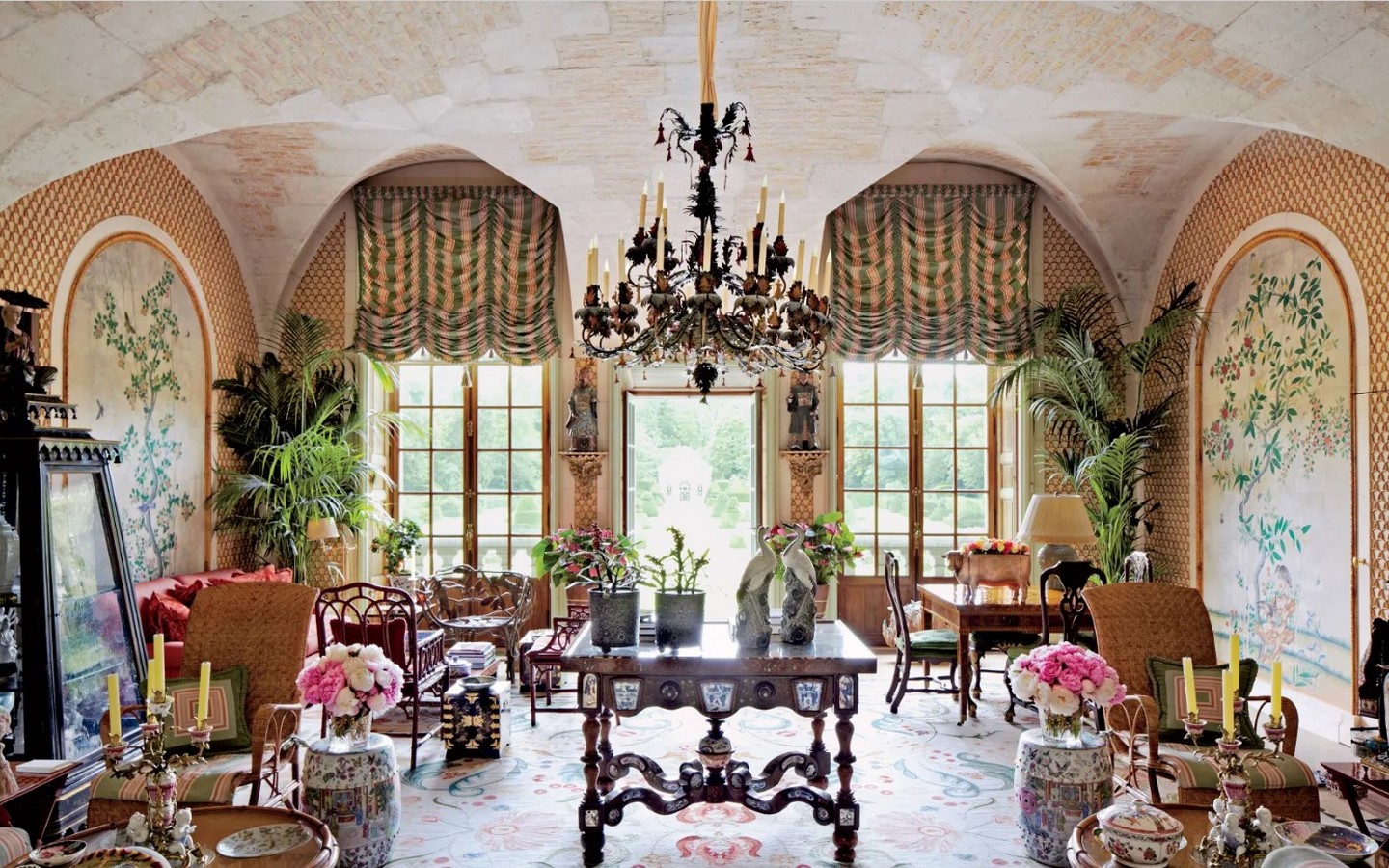
A Piedmontese chandelier from the 18th century hangs from the vaulted ceiling of the winter garden, and French doors lead to the rear terrace and topiary garden. Jacques Moreno Pontremoli created the flowery wool carpet. The marquetry doors are flanked by 1880s English chinoiserie mirrors and the Dutch centre table with delftware accents. The winter garden’s arching nooks are filled with Chinese panels, and the cocktail table is furnished with famille-rose dishes. Seats from Portugal surround a Piedmontese dining table.
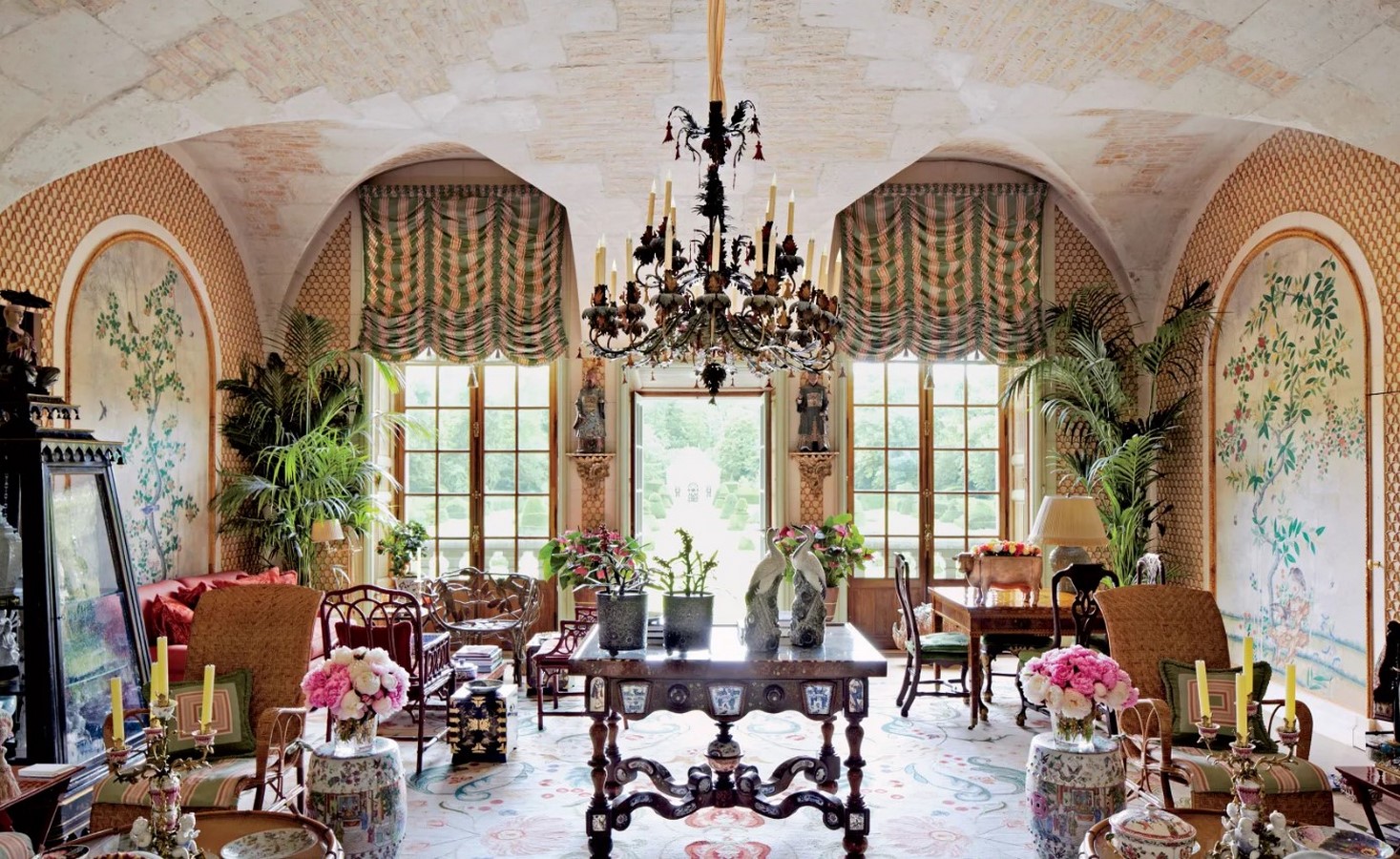
- The estate has gardens sprawling over a 280-acres
The gardens of the 280-acre estate were designed by Wirtz International, and the gardens with topiaries overlook the pigeonnaire and a pavilion containing a shell grotto.
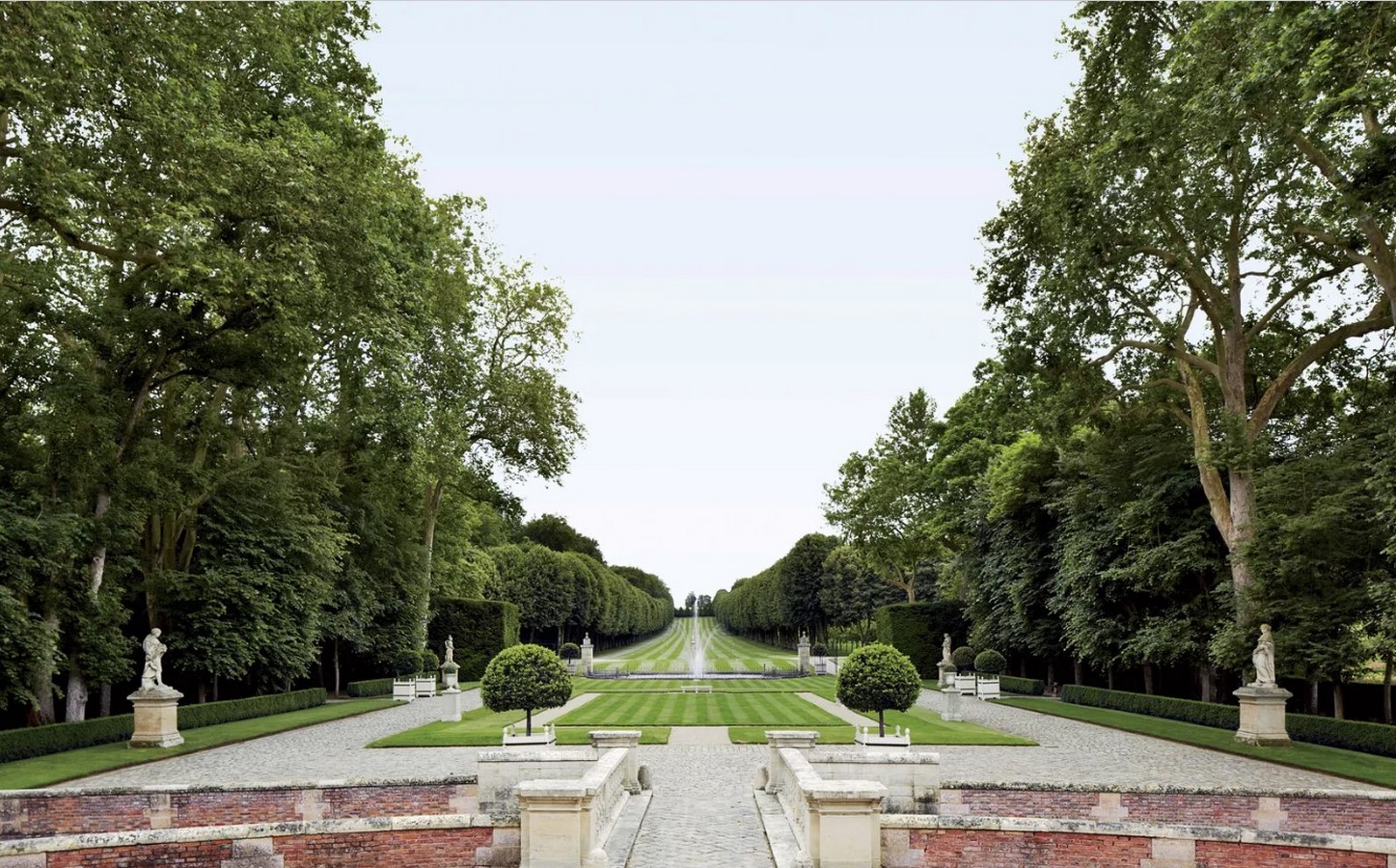
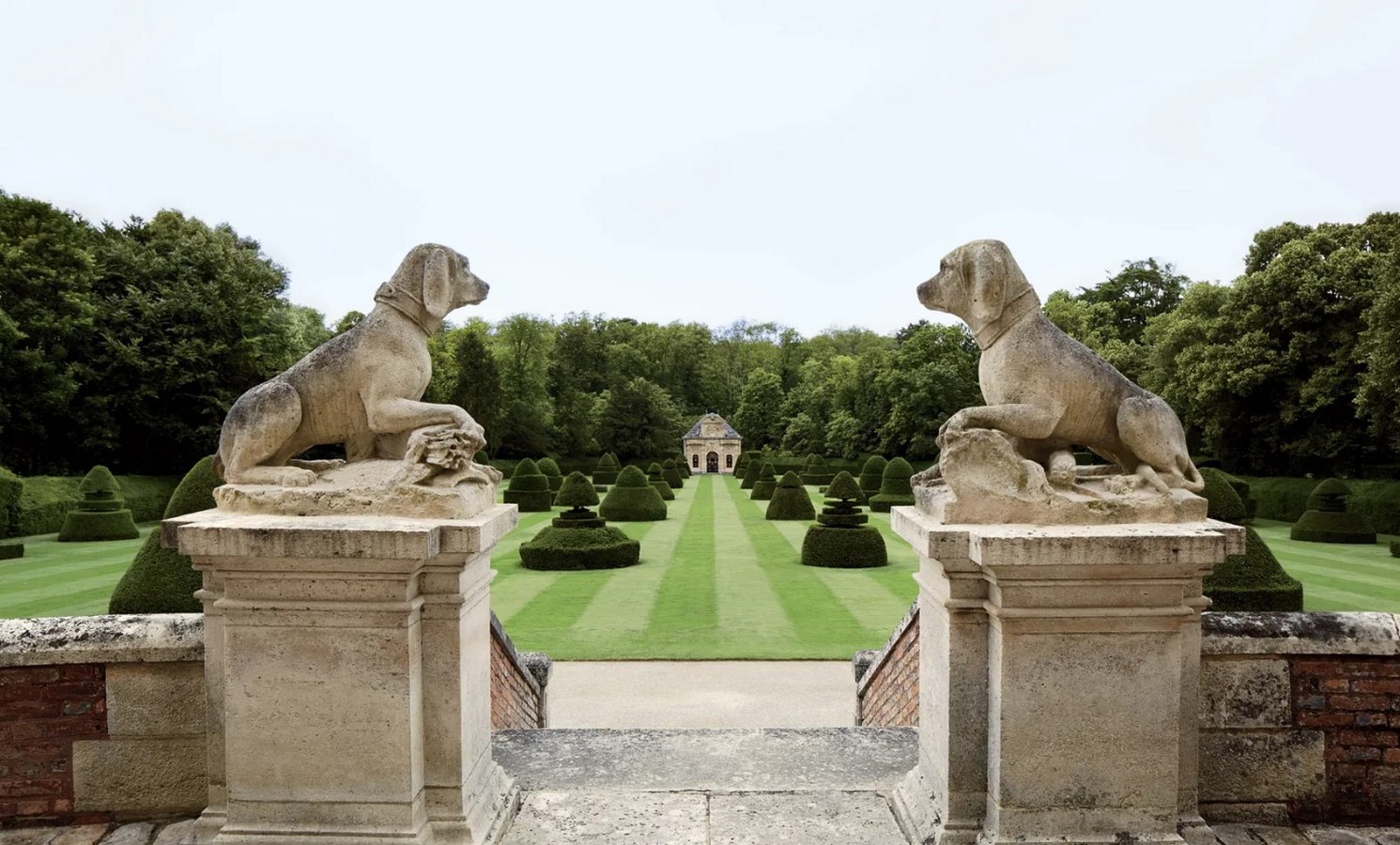
The château stairs are flanked by stone dogs sculpted by the French artist Jacques Sarazin in the 17th century.
- The property also has a Pigeonnier that Valentino saved from dilapidation
Another treasured refuge is the pigeonnier he rescued from disrepair two years ago, which was earlier used to raise doves. Valentino describes the cylindrical three-story structure trimmed with limestone and red brick as “the last thing I rebuilt.” Originally built to raise doves for food and droppings , the tower now serves as a quiet, fanciful hideaway for him to read, listen to music, and reflect on his latest design projects, including the costumes he created for four New York City Ballet productions that will premiere at the dance company’s fall gala.
Valentino claims that decorating the pigeonnier was difficult. “You couldn’t put in the traditional 18th-century European furniture and artifacts, as at the château—it wouldn’t feel right,” says the couturier, who also converted the estate’s two-story hay barn into a sleekly minimalist archive for his nearly five decades in fashion. “I responded, ‘No, I want to do something unique, something dramatic,” possibly even more spectacular and dramatic than his cherished winter garden.
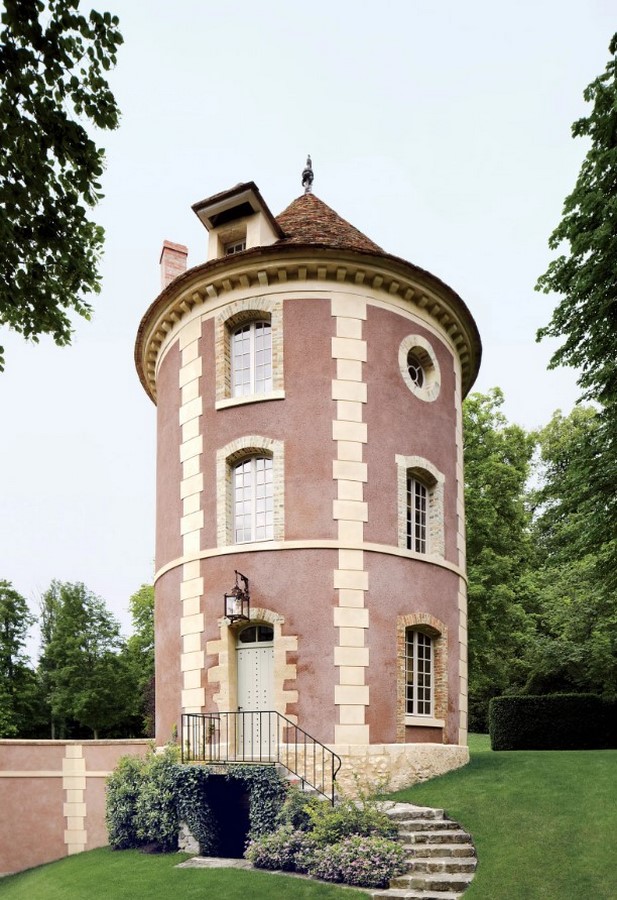
- A Modern twist to Traditional Chinese Interior elements
Valentino adopted a more modern approach to the chinoiserie concept, installing decor reminiscent of 1920s Shanghai, with sharp lines and strong contrasts. The pigeonnier’s creaky wood stairs were removed, and in their place was constructed a curved staircase with a handmade fretwork railing of vibrantly painted metal that wouldn’t seem out of place in a Turandot staging.
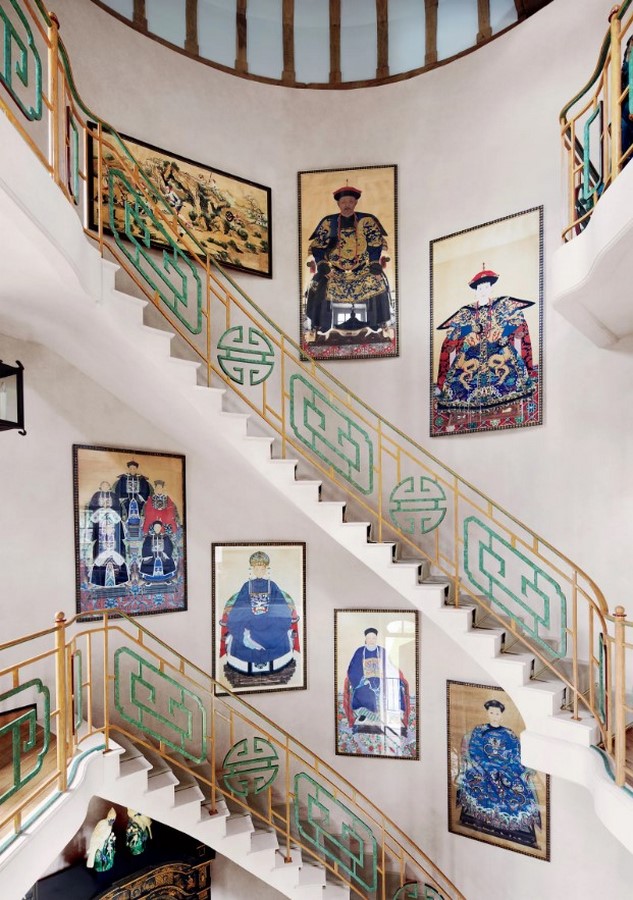
The walls are adorned with colourful Qing-dynasty ancestor murals, and the staircase’s tiny landings and galleries feature folding screens and crane statues. Windows and bookcases are capped with gilded pediments like thatched roofs, iron lanterns drop from the ceiling, and even the cinnabar-red bindings of Christie’s auction catalog that line the shelves fit in with the Far Eastern concept. Lacquer chests and hand-carved tables from the nineteenth century sparkle with mother-of-pearl inlay, and there are velvet-clad tufted sofas to admire it all. “Almost everything is Chinese,” the couturier says pleasantly, lounging in the pigeonnier’s tiny sitting room on the lowest level. “I find it is rather harmonious.”
- Valentino throws a party every year at the Castle during fashion week every July.
Valentino always holds a theme party at the castle during Paris Fashion Week, which is a great way to honour these rooms. Every July, the doors of Wideville are opened for a spectacular party. Recent events have included the Natalia Vodianova Naked Heart Foundation Love Ball and the presentation of Mr. Valentino’s archives.
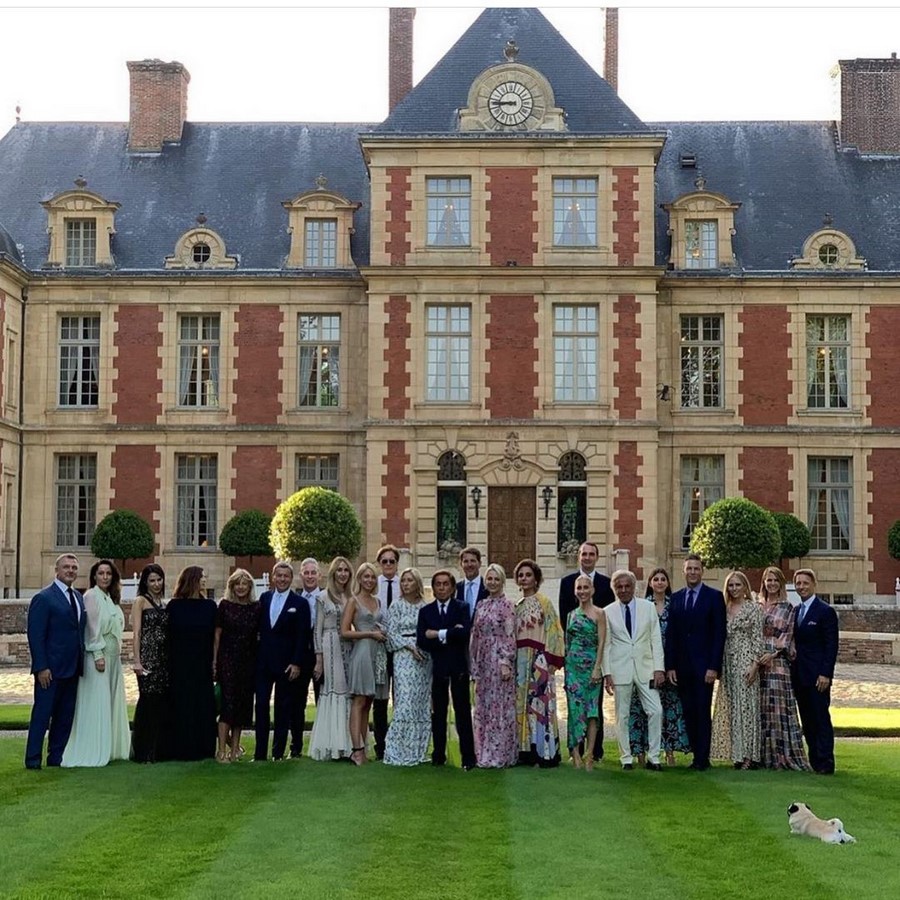
- The last existing Artificial Grotto
The hermitage, which dates from the 18th century, is decorated with Louis XV-style woodwork. The previous gardens’ structures are no longer visible, with the exception of the grotto, which is substantially intact and the only visible remains. The surviving parts were mostly dismantled in 1733. One of the few intact artificial grottos, built in the style of the Luxembourg Palace’s grotto between 1635 and 1636 by the Italian Thomas Francine, general steward of the king’s fountains. Its interior design has a stone and shell mosaic, as well as stucco sculptures that frame a ceiling painted by Simon Vouet. The walls are covered in shells and polychrome crystals. It is a small building with a square shape and a triumphal arch facade.
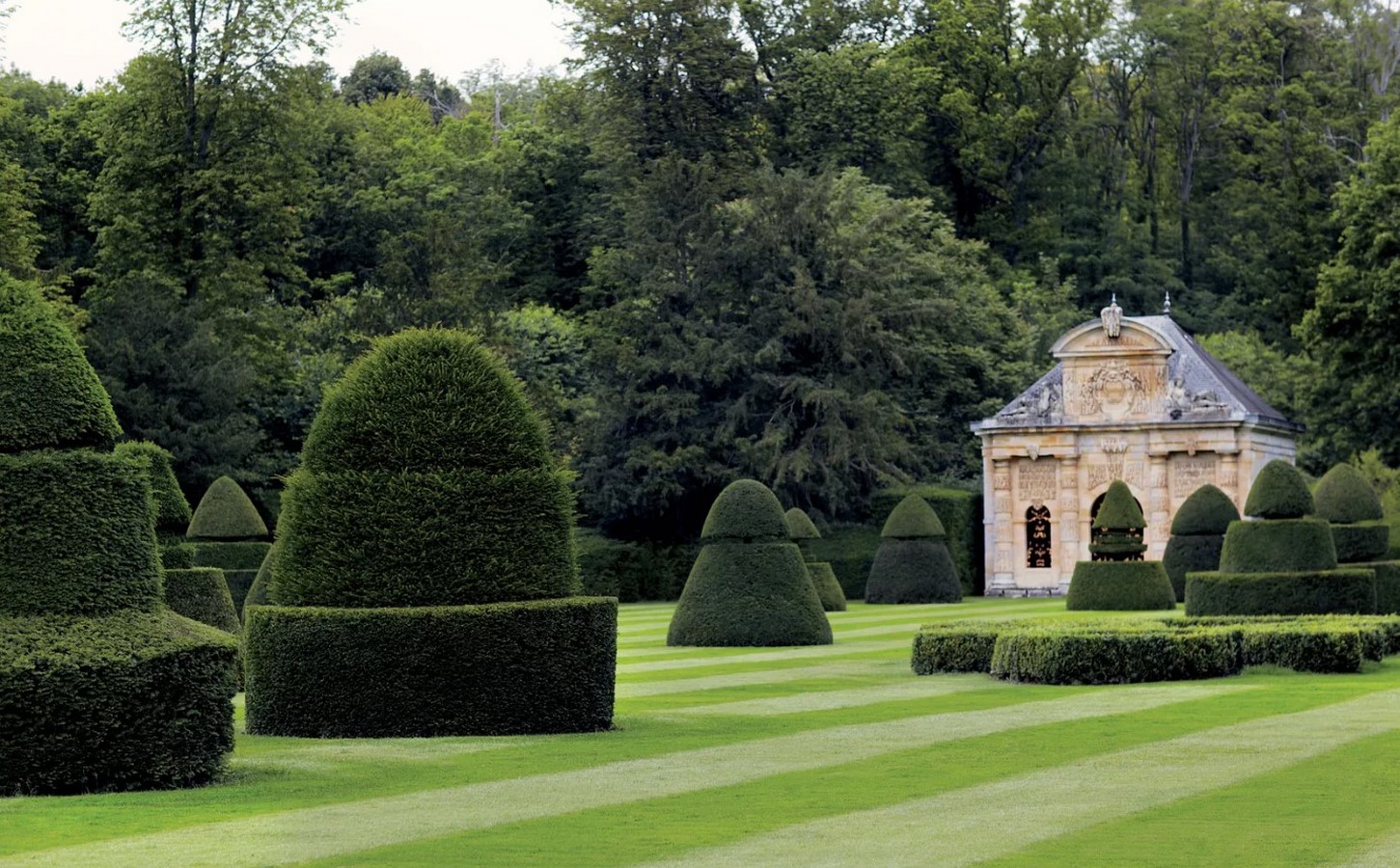
References :
- Thomas, D. (2016) Step inside Valentino Garavani’s house near Paris, Architectural Digest.
- Bpelarigo (2016) Inside Valentino Garavani’s Paris Château, Paris Design Agenda.
- Château de Wideville (no date) Château de Wideville – Features – Valentino Garavani Museum.
- Coltrinari, I. (2021) Fashion locations: Valentino Garavani’s Chateau de Wideville, nss magazine. nss magazine.
- Roséline (2017) At home with: Places: Valentino Garavani’s Château de Wideville, France, This Is Glamorous.
- Crespières -Davron (no date) ANCIENS AÉRODROMES.

























